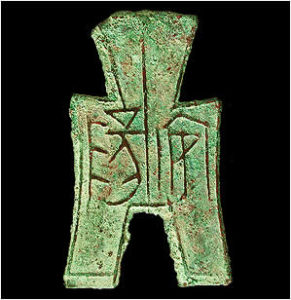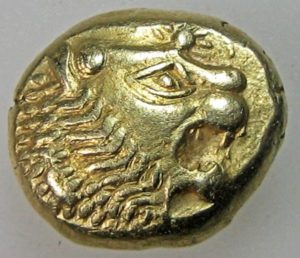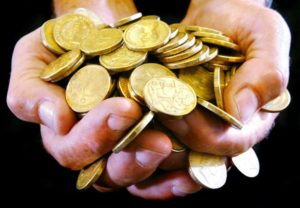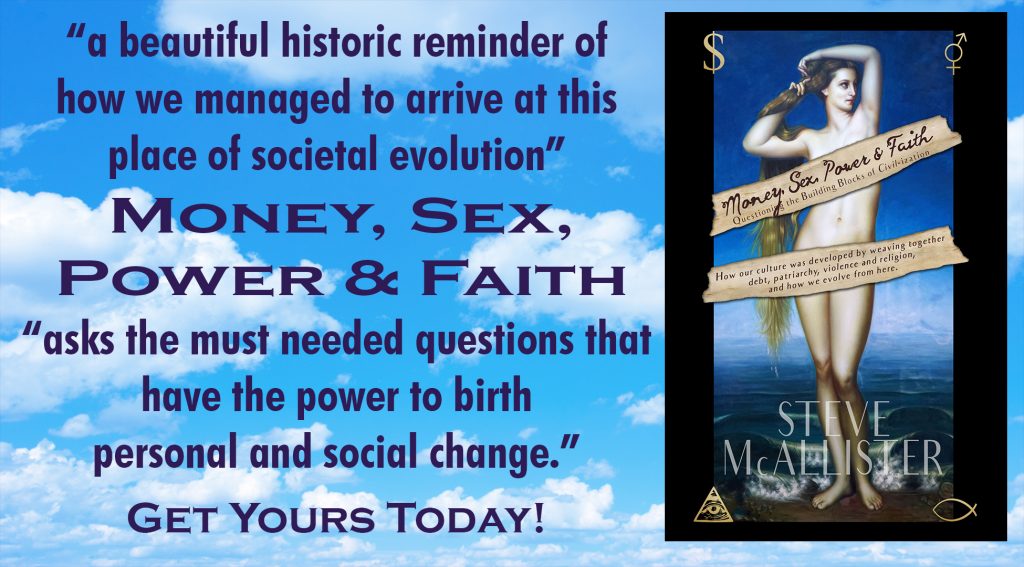The following is a chapter from Money, Sex, Power & Faith.
Order your copy in paperback or for Kindle!
“A nickel ain’t worth a dime anymore.”
–Yogi Berra
In addition to cattle, slaves, and grain, money as a means of trade has had a number of incarnations, such as teeth, gemstones, foods, weapons, seashells, grains, salt, animal skins, bones, and feathers, but none of them changed the world quite like cold, hard coins. Although this new methodology of money, banking, and divisions among humans was sprouting up in Mesopotamia to launch the Judeo/Christian/Islamic infusion into the rising civilization, around 1200 BC, money began to be used in China as well.
 There are records of cowrie shells being used as money throughout the world, but the Chinese were the first to implement the idea. Even the original Chinese character for “money” was a cowrie shell. But this wasn’t the only monetary innovation to come out of China.
There are records of cowrie shells being used as money throughout the world, but the Chinese were the first to implement the idea. Even the original Chinese character for “money” was a cowrie shell. But this wasn’t the only monetary innovation to come out of China.
When China started using coins. Initially, it seems that they small metal carvings shaped like tools to assist in trading productive measures, but those forms soon developed into round coins with holes in the middle so they could be strung together. Although China was the first to implement the use of tradable coins, Lydia, what is now Turkey, was the first to do it in style.
Three hundred years after the Chinese began trading coins made out of bronze, copper, and other base metals, Mesopotamia had to take it up just another notch and start making coins out of gold. There are varying opinions on how much this initial coin, actually an amalgam of gold and silver called electrum, was worth, and how much purchasing power it offered the people of Lydia. Some historians believe it could have purchased eleven sheep or ten goats. Some think they were only worth about one sheep. Some think one would be worth a few bottles of wine, and some think that one trite would have provided subsistence for the entire month.
 The mythology behind this trite, or stater, known as the Lydian Lion, named for it’s etchings of a lion head on either side, is based on a bath that King Midas took in the Pactolus River. Because Lydia was built on the banks of this river, they were blessed with all that Midas turned to gold as he washed himself in the waters. Of course, there is also the theory that the entire coin phenomenon was started as a scam.
The mythology behind this trite, or stater, known as the Lydian Lion, named for it’s etchings of a lion head on either side, is based on a bath that King Midas took in the Pactolus River. Because Lydia was built on the banks of this river, they were blessed with all that Midas turned to gold as he washed himself in the waters. Of course, there is also the theory that the entire coin phenomenon was started as a scam.
In 1958, Sture Bolin theorized that the Lydian Lion coin project was the world’s first numismatic deception. As he put it, it was “an imposture, a large-scale swindle,”19 whereby King Alyattes and his cohorts debased the value of the coins by adding additional silver and copper to the gold in order to keep the gold for themselves. If this is true, which the majority of scholars agree that it is, it certainly makes it more understandable as to why money so often seems to corrupt government. Essentially, it’s been doing that from the beginning.
While many believe that the first gold coins were too valuable for everyday trading, the integration of this new technology, even as a storehouse for the perceived value of the king’s bullion, must have kick-started something. As traders started using these coins, the practice was taken back to Greece, and the little metal disks took fire. But it may not have been the coins themselves that inspired the new economic movement, but rather the new activity of shopping.
 The allure of shopping is not all that dissimilar from the allure of gold. Gold has many practical uses. It’s been used in dentistry for centuries, medically for millennia, and now conducts electricity and information through smart phones, tablets, and both desktop and laptop computers all over the world. Yet gold’s most endearing quality is simply that it is shiny.
The allure of shopping is not all that dissimilar from the allure of gold. Gold has many practical uses. It’s been used in dentistry for centuries, medically for millennia, and now conducts electricity and information through smart phones, tablets, and both desktop and laptop computers all over the world. Yet gold’s most endearing quality is simply that it is shiny.
Similarly, shopping, while it does have its utilitarian attributes, allows us the opportunity for us to add something new, different, purposeful, and ultimately, shiny, into our lives. Like our uses for gold, with its values in usefulness and beauty, shopping is a uniquely human endeavor that helps us cultivate the art of living. Ultimately, shopping is ego activity, and should we decide to move consciously forward as a species, we would be wise to consider what we are truly shopping for, and how our participation in this activity affects all of the others species that are disinclined to participate in our endless accumulation of stuff.
Whether or not the initial Lydian Lions were used for trade in the markets, by about 550 BC, Greece started minting their own coins, and Lydia upped their game again by minting coins of both solid silver and solid gold, creating the first use of monetary denominations through bimetallic coinage. Although these coins, and the wealth they represented, became quite useful as a social lubricant and conduit of trade, they have also served as a means for the arbitrary estimation of value and continued separation from both the natural world and natural laws, entrancing us with shininess as we have lost sight of the truly valuable. As we rethink our definition of economy moving into the more beautiful world our hearts know is possible, it may be helpful to look at the roots of our obsession with money and come to a better understanding of how we can use the problem as a means to solution.
Order your copy of Money, Sex, Power & Faith today!


